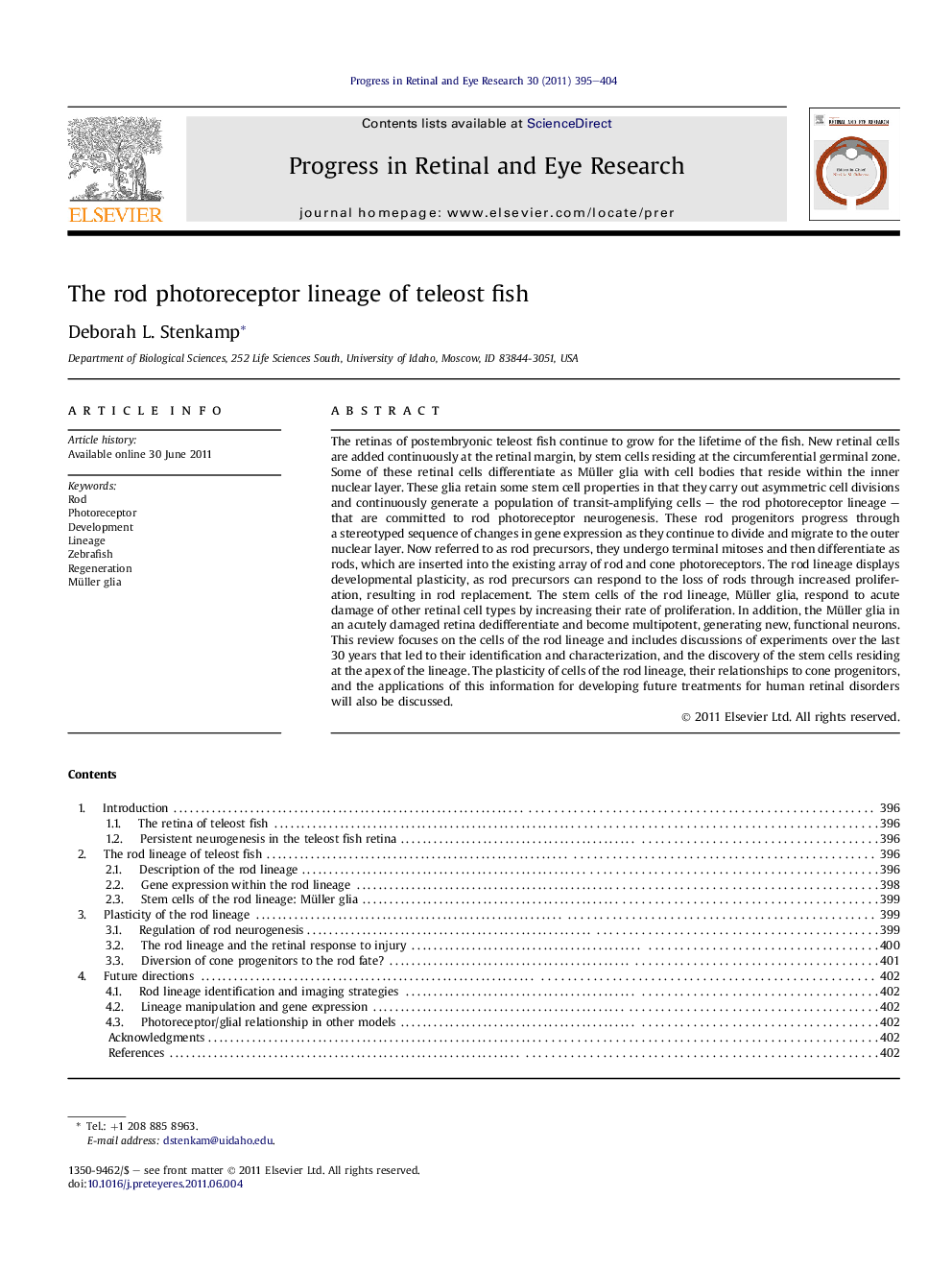| Article ID | Journal | Published Year | Pages | File Type |
|---|---|---|---|---|
| 6202771 | Progress in Retinal and Eye Research | 2011 | 10 Pages |
The retinas of postembryonic teleost fish continue to grow for the lifetime of the fish. New retinal cells are added continuously at the retinal margin, by stem cells residing at the circumferential germinal zone. Some of these retinal cells differentiate as Müller glia with cell bodies that reside within the inner nuclear layer. These glia retain some stem cell properties in that they carry out asymmetric cell divisions and continuously generate a population of transit-amplifying cells - the rod photoreceptor lineage - that are committed to rod photoreceptor neurogenesis. These rod progenitors progress through a stereotyped sequence of changes in gene expression as they continue to divide and migrate to the outer nuclear layer. Now referred to as rod precursors, they undergo terminal mitoses and then differentiate as rods, which are inserted into the existing array of rod and cone photoreceptors. The rod lineage displays developmental plasticity, as rod precursors can respond to the loss of rods through increased proliferation, resulting in rod replacement. The stem cells of the rod lineage, Müller glia, respond to acute damage of other retinal cell types by increasing their rate of proliferation. In addition, the Müller glia in an acutely damaged retina dedifferentiate and become multipotent, generating new, functional neurons. This review focuses on the cells of the rod lineage and includes discussions of experiments over the last 30 years that led to their identification and characterization, and the discovery of the stem cells residing at the apex of the lineage. The plasticity of cells of the rod lineage, their relationships to cone progenitors, and the applications of this information for developing future treatments for human retinal disorders will also be discussed.
